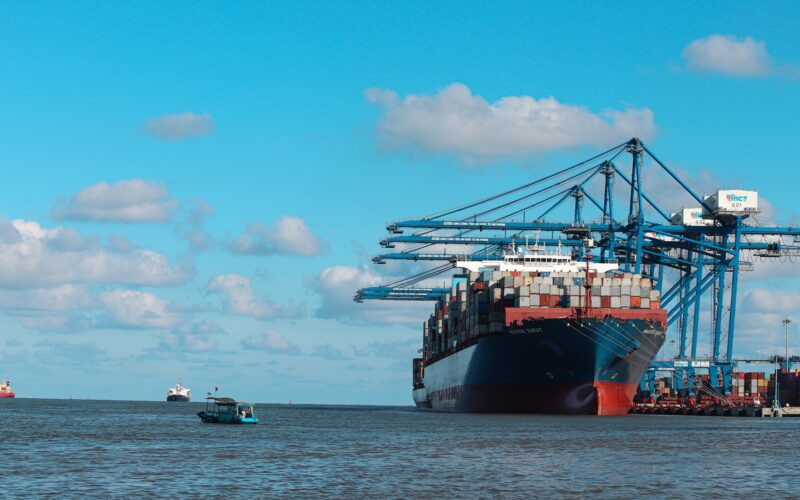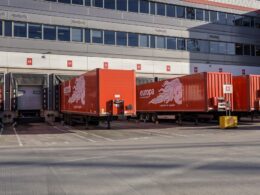In the world of supply chains and logistics, efficient freight management plays a crucial role in ensuring goods move smoothly from point A to point B. However, it can be a complex process with the potential for missteps and blunders that can result in costly repercussions. In this comprehensive guide, we’ll unravel the intricate steps to help you avoid freight management mistakes and navigate the complex world of logistics with finesse.
Planning Your Freight Strategy
What do you do when you’re about to embark on a cross-country road trip? You don’t just get in the car and miraculously hope for the best. If you want your trip to go smoothly, a little preparation is in order. For example, you wouldn’t hit the road without a map or a GPS. Similarly, in the world of freight management, a well-thought-out strategy is your roadmap to success. To avoid any potential complications, it’s imperative to begin with a solid plan that aligns with your business goals and use data analytics for your supply chain management. Here’s your roadmap:
- Define clear objectives for your freight management strategy.
- Tailor your approach to match your specific industry and customer needs.
- Select the most appropriate transportation modes, whether it’s road, rail, air, or sea.
Accurate Freight Forecasting
Now that you have your strategy in place, it’s time to gaze into the crystal ball of logistics and master the art of accurate freight forecasting. The ability to predict your shipping needs with precision is the linchpin in your quest to avoid unnecessary expenses or complications. Here’s how to do it:
- Gather historical shipping data and analyze it for patterns.
- Utilize sophisticated software tools that can crunch numbers and spot trends.
- Stay nimble and adjust your forecasts as market conditions fluctuate.
Vendor and Carrier Selection
Choosing the right partners in the freight management tango can make or break your logistics performance. When you aim to avoid any common freighting pitfalls, selecting vendors and carriers who share your commitment to excellence is paramount. Partners can help you carry the load and maintain the level of service you aim to provide. However, selecting the ideal companies to partner with isn’t always obvious. You need to conduct thorough due diligence on potential vendors and carriers. You should also evaluate their track record, reliability, and financial stability. Lastly, don’t hesitate to negotiate contracts that align with your objectives.
Inventory Management
In logistics, inventory management is the unsung hero that can significantly impact freight costs. Optimizing your inventory levels can help you track your cargo, allowing you to deal with any complications while also reducing costs immediately.
Here’s the strategy for effective inventory management: Implement just-in-time inventory practices to minimize storage costs, keep a close eye on demand fluctuations, adjust your inventory accordingly, and collaborate closely with suppliers to streamline the supply chain.
Route Optimization
Ah, the allure of the open road! But what if we told you that the shortest distance between two points isn’t always a straight line? Route optimization is your secret weapon to avoid freight management mistakes and minimize transit times. When it comes to last-mile delivery, you can partner with companies from that area. Based on their experience in local transportation, A2B Moving and Storage Virginia suggests looking into storage facilities that can double as local distribution centres. Many moving companies also offer storage services, so getting them from local professionals might be a good idea. The route to success suggests the following:
- Use advanced software and algorithms to calculate the most efficient routes.
- Consider factors like traffic patterns, road conditions, and fuel efficiency.
- Embrace technology for real-time route adjustments.
Packaging Efficiency
Think of packaging as the protective armor for your goods in transit. However, bulky or inefficient packaging can inflate your shipping costs. To avoid freight management mistakes, optimizing your packaging is a must. You can also consider outsourcing your packing to a specialized company to help reduce the workload. Here’s how to pack a punch:
- Choose packaging materials that balance protection with cost-effectiveness.
- Ensure compliance with packaging regulations to sidestep fines.
- Prioritize sustainability by reducing excess packaging.
Real-time Tracking and Visibility
In an era where information is power, real-time tracking and visibility are the superheroes of freight management. To avoid expensive setbacks, you need eyes on your cargo at all times. Thankfully, IoT technology can provide accurate information, allowing you to make adjustments on the go.
To keep your finger on the pulse, embrace GPS and real-time tracking, stay vigilant for delays or disruptions, and act promptly to resolve them. Provide customers with visibility into the status of their shipments.
Compliance and Regulations
Navigating the labyrinth of transportation regulations is no small feat. Non-compliance can lead to costly setbacks. If you want to stay away from legal complications, ensure you’re always on the right side of the law. A compliance checklist should be as follows:
- Stay informed about changing regulations that affect your industry.
- Maintain meticulous records and documentation to prove compliance.
- Partner with legal experts who specialize in transportation law.
Risk Management
The world of logistics isn’t without its fair share of risks, from natural disasters to unforeseen market shifts. Unnecessary risks can be avoided; however, you must be prepared to navigate these treacherous waters. Thankfully, with a dedicated strategy, you can minimize the risks you take on and their associated costs.
A risk-management safety net should include investing in comprehensive insurance coverage to protect your cargo. Ensure to develop contingency plans for potential disruptions or emergencies. Remember to continuously assess and mitigate risks as part of your strategy.
Performance Metrics and Continuous Improvement
In the grand finale of our freight management symphony, we arrive at the crescendo of performance metrics and continuous improvement. Tracking your progress and fine-tuning your strategy is the virtuoso way to avoid freight management mistakes. Here is how to hit the high notes:
- Define key performance indicators (KPIs) to measure success.
- Regularly review and analyze your KPI data.
- Use insights to make informed decisions and refine your strategy.
Conclusion
In the world of freight management, precision and strategy are your allies. By mastering the art of planning, forecasting, vendor selection, inventory management, route optimization, packaging efficiency, tracking, compliance, risk management, and performance metrics, you’ll be well-equipped to avoid freight management mistakes.













